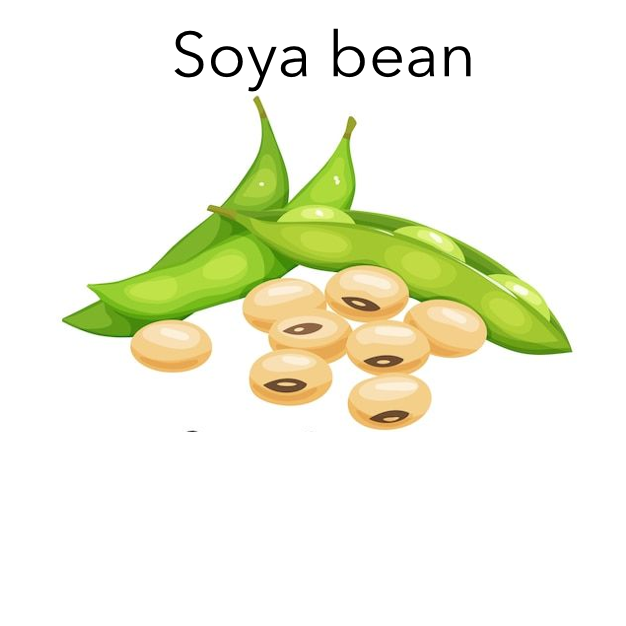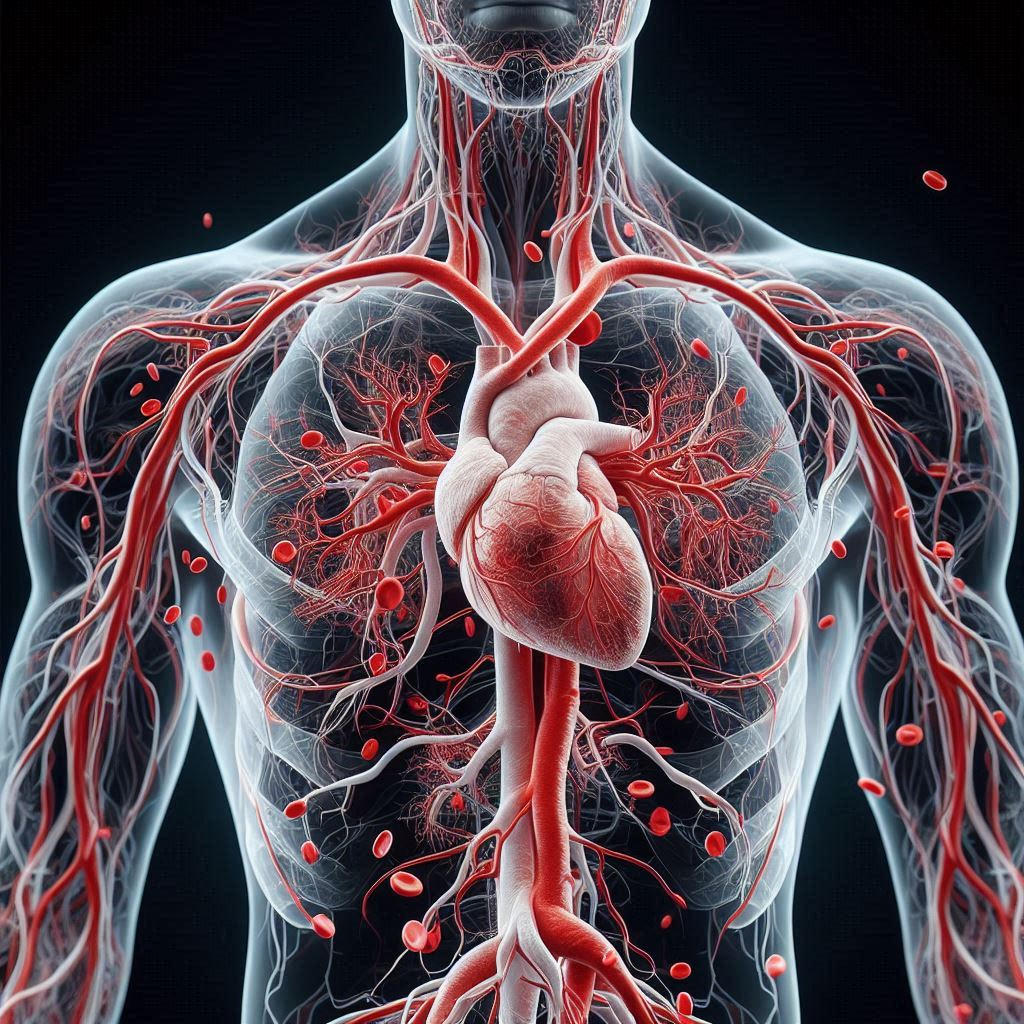What is soya bean?

Soya bean, also known as soybean in American English, is a legume native to East Asia. It is widely grown for its edible bean, which has numerous uses in food products and industrial applications.
Types of soya bean
There are several types of soya bean cultivated and used for various purposes. Here are some types:
1. Glycine max (G. max): This is the most commonly cultivated species of soybean. Within G. max, there are different varieties and cultivars that have been developed for specific traits such as high protein content, oil content, or adaptability to different climates.
2. Edamame: These are young soybeans harvested before they fully mature. They are typically boiled or steamed and served as a snack or appetizer. Edamame pods are usually green and slightly fuzzy.
3. Industrial Soya bean: These varieties are primarily used for oil production and for industrial purposes such as biodiesel production. They are selected for their high oil content and suitability for processing.
4. Non-GMO and Organic Varieties: With increasing consumer demand for non-genetically modified organisms (non-GMO) and organic products, there are varieties of soybeans that are specifically grown without genetic modification or using organic farming methods.
5. Specialty Varieties: These include soya beans grown for specific food products like tofu, soy milk, or soy sauce, which may have characteristics tailored to enhance flavor or texture.
Origins and Evolution
The soya bean (Glycine max) has a rich history that spans thousands of years and involves both natural evolution and human cultivation. Here’s an overview of its origins and evolution:
Origins-

1. Wild Ancestors: The soya bean wild ancestor is believed to be Glycine soja, a species native to East Asia, particularly regions of China, Korea, and Japan. Glycine soja is still found growing in the wild today.
2. Domestication: The domestication of soya bean likely began around 3,000 to 5,000 years ago in East Asia. Early cultivation efforts focused on selecting plants with desirable traits such as larger seeds and higher yield.
Spread and Cultivation-
1. Ancient China: Soya beans were cultivated extensively in ancient China, where they were valued as a source of protein and oil. They became an important crop in Chinese agriculture and cuisine.
2. Spread to Korea and Japan: From China, soybeans spread to Korea and Japan, where they also became integral to food culture. Soya beans were processed into various food products such as tofu, soy sauce, and miso.
3. Introduction to Europe and the Americas: Soya beans were introduced to Europe in the 17th century and to the Americas (specifically the United States) in the 18th century. Initially, they were primarily grown as forage crops and soil improvers rather than for food.
Modern Cultivation and Development:
1. United States Dominance: The United States became the world’s leading producer of soya beans in the 20th century. Soya beans became a major commodity crop due to their versatility, high protein content, and suitability for animal feed, oil production, and industrial uses.
2. Genetic Improvement: Modern agriculture has seen significant advancements in soya bean breeding and genetics. Plant scientists have developed cultivars with improved disease resistance, higher yields, and specific traits tailored for different uses (e.g., high oil content for biodiesel production).
3. Global Importance: Today, soya beans are grown on every continent except Antarctica. Brazil and Argentina have become major producers alongside the United States, with soybeans being a critical crop for global food security and economic stability.
Evolutionary Adaptations:
1. Adaptability: Soya beans are known for their adaptability to different climates and soil conditions. They can grow in a wide range of environments, from tropical to temperate regions.
2. Selective Breeding: Human selection and breeding have played a crucial role in shaping the soybean plant to meet various agricultural and industrial needs. This includes selecting for traits like drought tolerance, pest resistance, and specific nutritional profiles.
How to cook soya bean?
Cooking soya beans is straightforward and can be done using various methods depending on how you plan to use them in your dish. Here’s a basic guide on how to cook soya beans:

Ingredients:
- Dried soya beans
- Water
- Salt (optional)
Instructions:
1. Soaking (optional but recommended):
- If you have time, soak the dried soybeans overnight or for at least 8 hours. This shortens the cooking time and softens the beans.
- Rinse the soya beans thoroughly under cold water before soaking.
2. Boiling:
- After soaking (or if you choose not to soak, rinse the beans thoroughly), place them in a large pot.
- Fill the beans with enough water to cover them by about two inches.
- Optionally, add salt to the water (about 1 teaspoon per cup of beans).
- Put the water on medium-high heat and bring it to a boil.
3. Simmering:
- Once the water boils, reduce the heat to low to maintain a gentle simmer.
- To let steam out, slightly cover the pot with a lid.
- Cook the soya beans for about 1 to 1.5 hours, or until they are tender. The exact cooking time will depend on whether you soaked the beans and their size.
4. Testing for Doneness:
- To check if the soybeans are done, taste a few beans. They should be soft and creamy inside when fully cooked.
- If they are still firm or crunchy, continue cooking and check every 15 minutes until they reach the desired tenderness.
5. Draining and Using:
- Once the soybeans are cooked to your liking, drain them using a colander or sieve.
- Rinse them with cold water to cool them down if you’re using them in a salad or another dish that requires them to be cooled.
Tips:
1. Seasoning: Soybeans can be cooked plain or seasoned with herbs, spices, or aromatics like garlic or onion for added flavor.
2. Storage: Cooked soybeans can be stored in the refrigerator for up to a week or frozen for longer storage. They can be used in salads, soups, stews, stir-fries, or mashed into spreads like hummus.
3. Variations: You can also pressure cook or use a slow cooker for cooking soybeans, adjusting the cooking times accordingly.
Nutritional value
Soybeans are highly nutritious and offer a range of essential nutrients that contribute to overall health. Here’s an overview of the nutritional value of soybeans per 100 grams of cooked soybeans:
Macronutrients:
1. Protein: Soybeans are an excellent source of plant-based protein, containing about 17 grams per 100 grams of cooked beans. This protein is considered a complete protein, meaning it provides all the essential amino acids needed by the body.

2. Carbohydrates: Soybeans contain approximately 9 grams of carbohydrates per 100 grams. These carbohydrates primarily consist of dietary fiber (about 6 grams) and some sugars.
3. Fats: Soybeans contain healthy fats, with approximately 6 grams of total fat per 100 grams. This includes both saturated and unsaturated fats, including omega-3 and omega-6 fatty acids.
Vitamins:
1. Vitamin K: Soybeans are rich in vitamin K, with about 47 micrograms per 100 grams. Vitamin K is important for blood clotting and bone health.
2. Vitamin B6: Soybeans contain about 0.4 milligrams of vitamin B6 per 100 grams. Vitamin B6 is essential for brain development and function, as well as for the immune system.
3. Folate (Vitamin B9): Folate is important for cell division and DNA synthesis. Soybeans provide approximately 375 micrograms of folate per 100 grams.
Minerals:
1. Iron: Soybeans are a good source of iron, containing about 3.5 milligrams per 100 grams. Iron is essential for oxygen transport in the blood and energy production.
2. Calcium: Soybeans contain approximately 102 milligrams of calcium per 100 grams. Calcium is crucial for bone health and muscle function.

3. Magnesium: Soybeans provide about 86 milligrams of magnesium per 100 grams. Magnesium is important for nerve function, muscle contraction, and bone health.
4. Potassium: Soybeans contain around 515 milligrams of potassium per 100 grams. Potassium helps regulate blood pressure and fluid balance in the body.
Other Nutrients:
- Phytonutrients: Soybeans are rich in phytonutrients such as isoflavones, which have antioxidant properties and may provide various health benefits, including reducing the risk of heart disease and certain cancers.
Benefits
1. High-Quality Protein:
Soybeans are one of the few plant-based foods that provide a complete source of protein, meaning they contain all nine essential amino acids that the body cannot produce on its own. This makes soybeans an excellent protein source for vegetarians, vegans, and those looking to reduce their intake of animal proteins.
2. Heart Health:

- Lower Cholesterol: Soy protein, particularly when consumed as part of a low-fat diet, has been shown to lower LDL (bad) cholesterol levels without affecting HDL (good) cholesterol levels.
- Cardiovascular Health: Regular consumption of soy products has been associated with a reduced risk of cardiovascular disease due to their beneficial effects on cholesterol levels, blood pressure, and arterial health.
3. Bone Health:
Soybeans are a good source of calcium and magnesium, both of which are important for maintaining strong and healthy bones. Consuming soybeans may contribute to better bone density and reduce the risk of osteoporosis, especially in postmenopausal women.
4. Menopausal Symptoms:
- Isoflavones: Soybeans contain phytoestrogens called isoflavones, which are similar in structure to estrogen. These compounds may help alleviate menopausal symptoms such as hot flashes and night sweats in women.
5. Cancer Prevention:
- Antioxidant Effects: The isoflavones in soybeans have antioxidant properties that help protect cells from damage caused by free radicals, which are implicated in the development of cancer.
- Breast Cancer: Some studies suggest that soy consumption may be associated with a lower risk of breast cancer, especially among Asian populations where soy intake is traditionally high.
6. Weight Management:
- Protein and Fiber Content: The high protein and fiber content in soybeans can help promote feelings of fullness and satiety, which may aid in weight management by reducing overall calorie intake.
7. Digestive Health:

- Fiber: Soybeans are a good source of dietary fiber, which promotes digestive health by preventing constipation and supporting a healthy gut microbiota.
8. Skin Health:
- Isoflavones: Isoflavones in soybeans may have protective effects against UV-induced skin damage and may contribute to overall skin health and appearance.
9. Diabetes Management:
- Blood Sugar Control: Some research suggests that soy protein and isoflavones may help improve insulin sensitivity and blood sugar control, potentially benefiting individuals with type 2 diabetes.
Risks
1. Allergies:
- Soy Allergy: Soybeans are a common allergen, particularly among children and adults with other food allergies. Symptoms of soy allergy can range from mild itching or hives to severe reactions such as difficulty breathing (anaphylaxis). Individuals with soy allergies should avoid all soy products.
2. Thyroid Function:
- Goitrogens: Soybeans contain compounds called goitrogens, which can interfere with thyroid function by inhibiting iodine uptake. This effect is generally minimal when soy foods are consumed in moderate amounts, but individuals with thyroid disorders or iodine deficiency should monitor their soy intake and consult with a healthcare provider.
3. Hormonal Effects:
- Phytoestrogens: Soybeans contain phytoestrogens called isoflavones, which have a weak estrogenic effect in the body. While this can have beneficial effects such as reducing menopausal symptoms, there is some concern that high intake of soy isoflavones could affect hormone-sensitive conditions such as breast cancer or reproductive health. More research is needed to understand these effects fully.
4. Digestive Issues:
- Flatulence: Soybeans contain complex carbohydrates that can be difficult to digest, leading to gas and bloating in some individuals, especially when consuming large quantities or if the beans are not properly cooked.
5. GMO Concerns:
- Genetically Modified Organisms (GMOs): Many soybeans grown commercially are genetically modified to resist herbicides or for other agricultural purposes. Some people prefer to avoid GMO foods due to environmental or health concerns. Choosing organic or non-GMO verified soy products can help mitigate these concerns.
6. Processing:
- Processing Methods: Some processed soy products, such as soy protein isolates or textured vegetable protein (TVP), may contain additives or have undergone processes that could affect their nutritional quality. It’s important to choose minimally processed soy products when possible.
7. Interaction with Medications:
- Drug Interactions: Soy isoflavones may interact with certain medications, including thyroid medications and hormonal therapies. If you are taking medications, particularly for thyroid or hormone-related conditions, consult with your healthcare provider before increasing your soy consumption.
8. Infant Feeding:
- Infant Formula: While soy-based infant formulas are available for babies with milk allergies or lactose intolerance, they should only be used under the guidance of a healthcare professional. Soy formula may not be suitable for all infants and should not be used without medical advice.

FAQ (frequently asked questions)
1. What are the main nutritional benefits of soybeans?
Soybeans are rich in protein, providing all essential amino acids. They are also a good source of fiber, vitamins (especially B vitamins), and minerals like iron, calcium, and magnesium. Soybeans contain phytonutrients such as isoflavones, which have antioxidant properties.
2. Is soy good for heart health?
Yes, soybeans and soy products have been shown to promote heart health in several ways. They can help lower LDL (bad) cholesterol levels, which reduces the risk of heart disease. The presence of phytoestrogens and other compounds in soy may also contribute to cardiovascular benefits.
3. Are there any risks associated with consuming soybeans?
While soybeans are generally considered safe for most people, there are potential risks to consider. These include allergies (soy is a common allergen), concerns about thyroid function due to goitrogens in soy, and potential hormonal effects due to phytoestrogens. Individuals with soy allergies, thyroid disorders, or specific health concerns should consult with a healthcare provider before consuming soy products.
4. Can soybeans help with weight loss?
Soybeans are high in protein and fiber, which can promote feelings of fullness and satiety. This may aid in weight management by reducing overall calorie intake. Including soybeans as part of a balanced diet, along with regular physical activity, can contribute to weight loss or maintenance goals.
5. Are soybeans genetically modified?
Many commercially grown soybeans are genetically modified (GMO) to enhance traits such as herbicide resistance or yield. However, organic or non-GMO verified soybeans are also available for those who prefer to avoid genetically modified foods.
6. How can soybeans be incorporated into a diet?
Soybeans can be used in various ways in cooking:
- Boiled or steamed: Enjoy as a side dish or snack (edamame).
- Tofu: Used in stir-fries, soups, or as a meat substitute.
- Soy milk: A dairy-free alternative for beverages, cereals, or cooking.
- Tempeh: Fermented soybean cake used in sandwiches, salads, or stir-fries.
- Soy sauce: A staple condiment in Asian cuisine for seasoning.
7. Can soybeans be consumed by children or during pregnancy?
Soybeans and soy products are generally safe for consumption by children and during pregnancy when consumed in moderation as part of a balanced diet. However, specific concerns or allergies should be discussed with a healthcare provider.
8. Are there alternatives to soy for individuals with soy allergies?
Yes, there are many alternatives to soy for individuals with soy allergies, including almond milk, coconut milk, rice milk, and oat milk as alternatives to soy milk. Additionally, quinoa, lentils
Conclusion
Soybeans epitomize the intersection of tradition, nutrition, industry, and sustainability in agriculture. Their journey from ancient East Asian crops to global commodities reflects their adaptability and resilience. As we navigate the complexities of modern agriculture, understanding and harnessing the full potential of soybeans is crucial for ensuring food security, promoting health, and preserving our planet for future generations. Whether as a protein source on our plates or an industrial ingredient in our products, soybeans continue to inspire innovation and sustainability in the global agricultural landscape.
Table of Contents
Read more about Soya bean
Go and visit dusearchit.in and get more knowledge about others topics.
